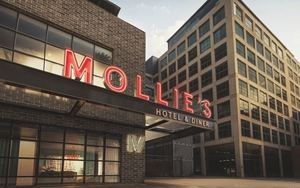THE ASSEMBLY Rooms on Cheetham Hill Road were amongst the most elaborate, elegant and beautiful chambers in the North of England. They were designed by Manchester architects Mills and Murgatroyd and erected in the 1850s with interior decoration from John Gregory Crace.
Miss Norris came as Snow, Miss Orrell as the Moon, Miss Shuster as Ice, Miss Entwistle as Night
Where they stood is a car wash occupying a former petrol station which may or may not be the most elaborate, elegant and beautiful ex-garage in the North of England.
There had been other Assembly Rooms in Manchester in St Ann’s Street and in Mosley Street. When the latter closed, money was eventually found to build again, this time in the prosperous suburb of Cheetham Hill close to the city centre. The building opened in 1857.
The exterior was plain but the inside it was a jaw-dropper, a double cube ballroom 80 feet (24 m) by 40 feet (12 m). This was created by one of the design superstars of the nineteenth century, John Gregory Crace. It had a Louis XV jewel-box interior of gilded curlicues, cornices and cherubs with 20ft mirrors reflecting the light from three stupendous crystal chandeliers.
Getting Crace as interior designer was a coup for the directors of the Assembly Rooms. He had already designed the interior of the Palace of Westminster (Houses of Parliament) with A.W.N. Pugin, elements of the Buckingham Palace interior, the Waterloo Chamber at Windsor Castle (shown below) and numerous theatres and prominent buildings.
His glittering designs helped make the place immediately popular.
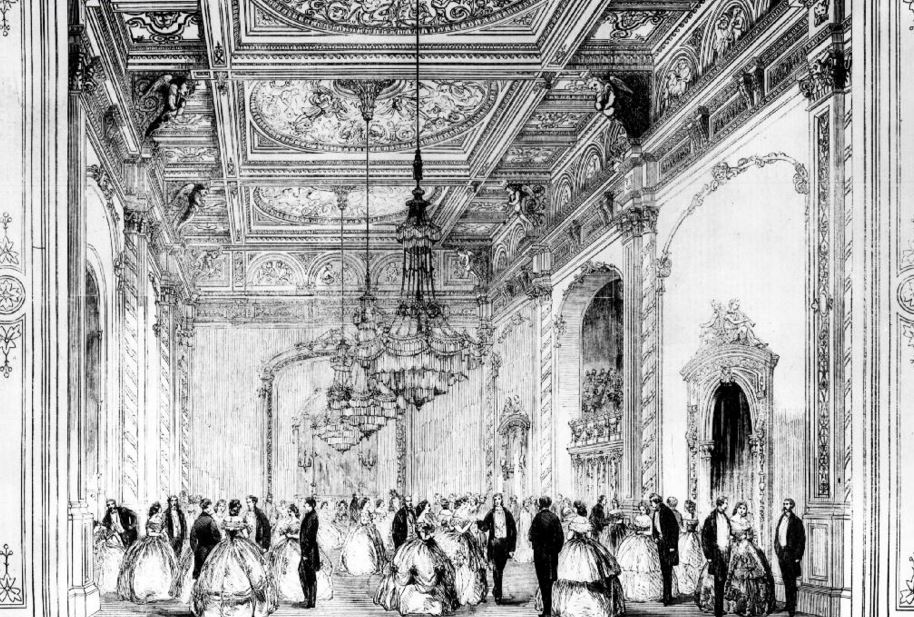 Only a few images survive as reminders of astonishing grandeur
Only a few images survive as reminders of astonishing grandeur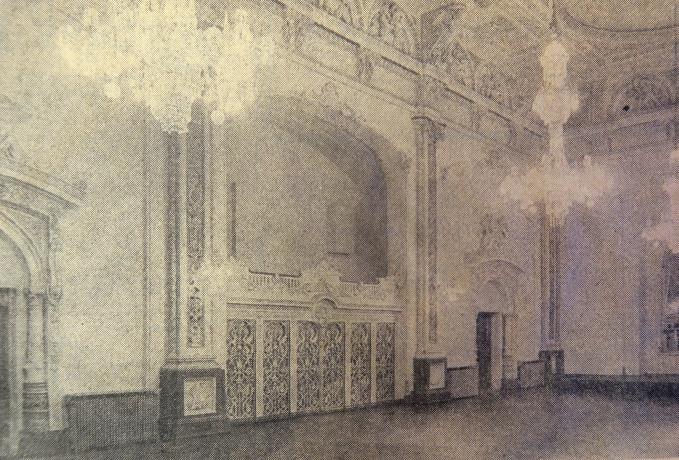 Another faded picture, this time from the Guardian just before demolition
Another faded picture, this time from the Guardian just before demolitionOne of the sweetest events at the Assembly Rooms occurred on 19 January 1870 when ‘twenty bachelors of Manchester arranged a fancy-dress ball’ for 450 ladies and gentlemen. It went on surprisingly late as well.
This is a contemporary description: ‘The beautiful suite of rooms had their extraordinary decorations enhanced by a judicious introduction of fine foliage and flowering plants. The supper room was richly decorated and the table laden with gold and silver plate in addition to the sumptuous provision. The band was Mr L Goodwin’s and in order that everything might be of the newest and best some of the music had been obtained direct from Vienna and had never been played in England before. Dancing commenced soon after 9.30pm and with the intermission of supper about midnight, was carried on until a late hour yesterday morning.’
Some of the costumes displayed read delightfully. Miss Dorrington came as the Queen of Folly, Mr Gladstone as Don Sebastian, Captain Garnett as a Knight Templar, Miss Leech as Blanche de Castille, Mr Dudgeon as Hamlet.
Some of costumes were abstract and read even better. Miss Norris came as Snow, Miss Orrell as the Moon, Miss Shuster as Ice, Miss Entwistle as Night.
Then there are the more curious outfits.
Miss Stitt came as the White Cat and Miss Goldie as the owl in the ivy bush, maybe representing wisdom (the owl) and constancy (the ivy), or maybe representing the voices in her head. Mr Bradshaw was a time-traveller, and came dressed ‘a gentleman of the early twentieth century’. It’s a shame no pictures survive of the pageant.
After just over a hundred years of entertaining Manchester in splendid style the Assembly Rooms finally failed as the wealthy moved further out of the central areas and deeper into distant suburbs. In 1960 Alderman J Fitzimmons, a former Lord Mayor of the city, bought the buildings but not for music and dancing. He wanted to use them as an extension to his motor tyre business. The crystal chandeliers were a problem though, as Fitzsimmons described, they were ‘inconvenient’ for his type of business.
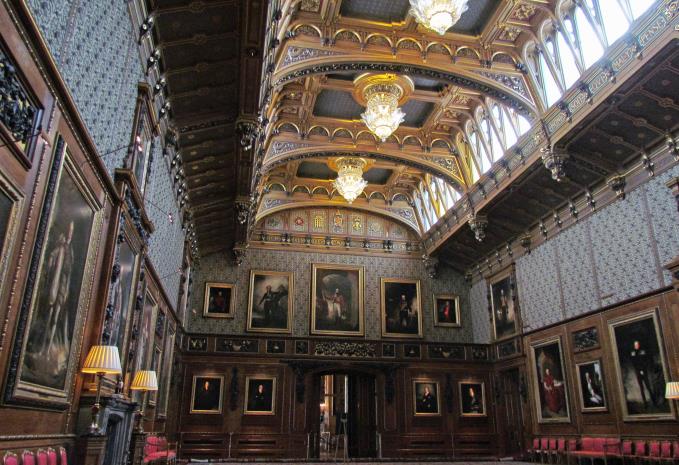 A typically elaborate Crace interior in Windsor Castle
A typically elaborate Crace interior in Windsor Castle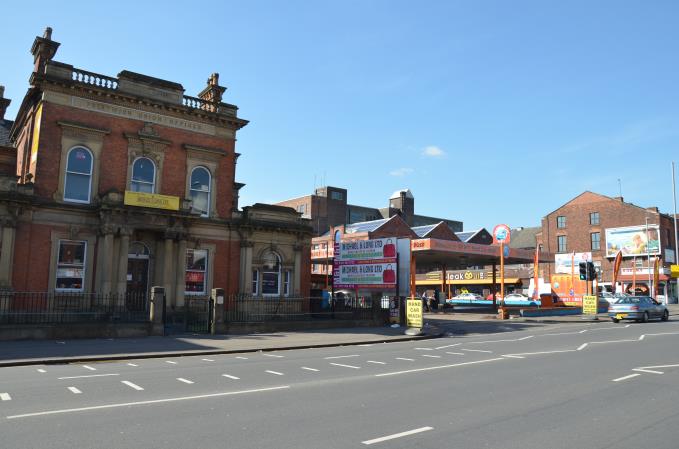 Car wash and the handsome former Prestwich Union Offices from 1862
Car wash and the handsome former Prestwich Union Offices from 1862By 1966 not only the chandeliers but everything had gone.
Fitzsimmon's son said the buildings had to be demolished and had to be turned into a petrol station. There were personal reasons. John Fitzsimmons explained how death duties on his father’s estate had been crippling and he had to think of the family first. He said: “I hope you don’t think we have no feeling in these matters.” The Victorian Society called the news ‘frightful, the destruction of the building would be a grievous loss to the country’. The filling station remains, although as mentioned above, presently converted into a car wash.
Yet...
Stand close on still evenings in the late hours of the morning and spirits come. Here’s the ghost of the Queen of Folly giggling with the shade of Hamlet, there’s light flashing off the mirrors, excitement in the air but careful, hidden, almost from sight behind a column is the owl in the ivy bush looking on with undisguised jealousy.
Unfortunately Miss Norris and Miss Shuster are melting.
This story comes from research with the second in Jonathan's look back at 'the city that was and the city that might have been'. You can buy the first book, Lost and Imagined Manchester, through Manchester Confidential here.
 The severe exterior
The severe exterior











